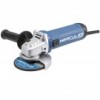Harbor Freight Tools 62556 User Manual - Page 7
Extension Cords, Symbology, Warning Symbols and Definitions
 |
View all Harbor Freight Tools 62556 manuals
Add to My Manuals
Save this manual to your list of manuals |
Page 7 highlights
Extension Cords Symbology 1. Grounded tools require a three wire extension cord. Double Insulated tools can use either a two or three wire extension cord. 2. As the distance from the supply outlet increases, you must use a heavier gauge extension cord. Using extension cords with inadequately sized wire causes a serious drop in voltage, resulting in loss of power and possible tool damage. (See Table A.) 3. The smaller the gauge number of the wire, the greater the capacity of the cord. For example, a 14 gauge cord can carry a higher current than a 16 gauge cord. (See Table A.) 4. When using more than one extension cord to make up the total length, make sure each cord contains at least the minimum wire size required. (See Table A.) 5. If you are using one extension cord for more than one tool, add the nameplate amperes and use the sum to determine the required minimum cord size. (See Table A.) Double Insulated Canadian Standards Association Underwriters Laboratories, Inc. V Volts ~ Alternating Current A Amperes n0 xxxx/min. No Load Revolutions per Minute (RPM) WARNING marking concerning Risk of Eye Injury. Wear ANSI-approved safety goggles with side shields. 6. If you are using an extension cord outdoors, make sure it is marked with the suffix "W-A" ("W" in Canada) to indicate it is acceptable for outdoor use. 7. Make sure the extension cord is properly wired and in good electrical condition. Always replace a damaged extension cord or have it repaired by a qualified electrician before using it. 8. Protect the extension cords from sharp objects, excessive heat, and damp or wet areas. TABLE A: RECOMMENDED MINIMUM WIRE GAUGE FOR EXTENSION CORDS* (120/240 VOLT) NAMEPLATE AMPERES (at full load) EXTENSION CORD LENGTH 25´ 50´ 75´ 100´ 150´ 0 - 2.0 18 18 18 18 16 2.1 - 3.4 18 18 18 16 14 3.5 - 5.0 18 18 16 14 12 5.1 - 7.0 18 16 14 12 12 7.1 - 12.0 18 14 12 10 - 12.1 - 16.0 14 12 10 - - 16.1 - 20.0 12 10 - - - * Based on limiting the line voltage drop to five volts at 150% of the rated amperes. Read the manual before set-up and/or use. WARNING marking concerning Risk of Hearing Loss. Wear hearing protection. WARNING marking concerning Risk of Fire. Do not cover ventilation ducts. Keep flammable objects away. WARNING marking concerning Risk of Electric Shock. Properly connect power cord to appropriate outlet. Warning Symbols and Definitions This is the safety alert symbol. It is used to alert you to potential personal injury hazards. Obey all safety messages that follow this symbol to avoid possible injury or death. Indicates a hazardous situation which, if not avoided, will result in death or serious injury. Indicates a hazardous situation which, if not avoided, could result in death or serious injury. Indicates a hazardous situation which, if not avoided, could result in minor or moderate injury. Addresses practices not related to personal injury. Model 62556 For technical questions, please call 1-888-866-5797. Page 7















